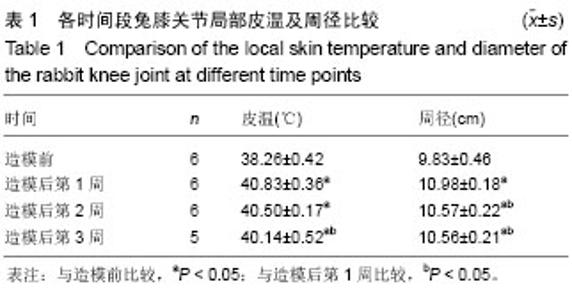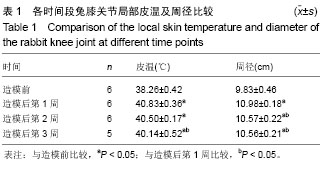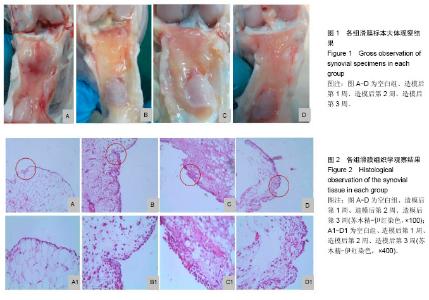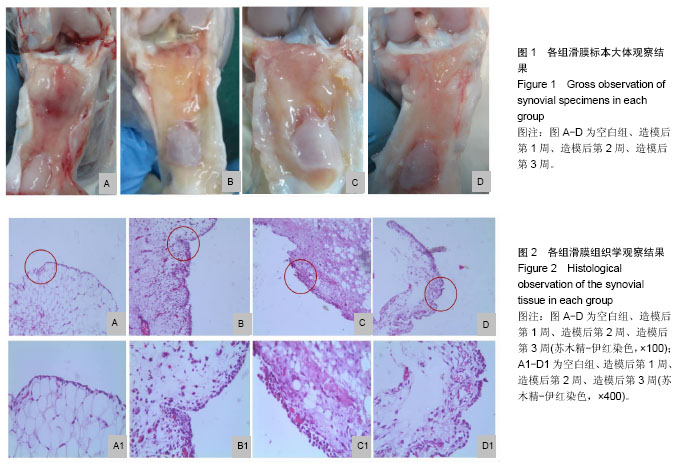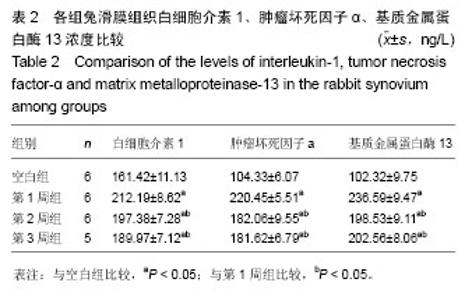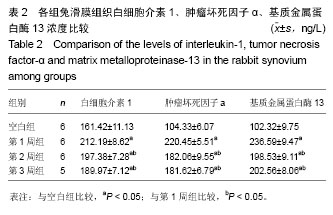| [1] |
Wang Jianping, Zhang Xiaohui, Yu Jinwei, Wei Shaoliang, Zhang Xinmin, Xu Xingxin, Qu Haijun.
Application of knee joint motion analysis in machanism based on three-dimensional image registration and coordinate transformation
[J]. Chinese Journal of Tissue Engineering Research, 2022, 26(在线): 1-5.
|
| [2] |
Jin Tao, Liu Lin, Zhu Xiaoyan, Shi Yucong, Niu Jianxiong, Zhang Tongtong, Wu Shujin, Yang Qingshan.
Osteoarthritis and mitochondrial abnormalities
[J]. Chinese Journal of Tissue Engineering Research, 2022, 26(9): 1452-1458.
|
| [3] |
Zhang Jichao, Dong Yuefu, Mou Zhifang, Zhang Zhen, Li Bingyan, Xu Xiangjun, Li Jiayi, Ren Meng, Dong Wanpeng.
Finite element analysis of biomechanical changes in the osteoarthritis knee joint in different gait flexion angles
[J]. Chinese Journal of Tissue Engineering Research, 2022, 26(9): 1357-1361.
|
| [4] |
Yao Xiaoling, Peng Jiancheng, Xu Yuerong, Yang Zhidong, Zhang Shuncong.
Variable-angle zero-notch anterior interbody fusion system in the treatment of cervical spondylotic myelopathy: 30-month follow-up
[J]. Chinese Journal of Tissue Engineering Research, 2022, 26(9): 1377-1382.
|
| [5] |
Wang Baojuan, Zheng Shuguang, Zhang Qi, Li Tianyang.
Miao medicine fumigation can delay extracellular matrix destruction in a rabbit model of knee osteoarthritis
[J]. Chinese Journal of Tissue Engineering Research, 2022, 26(8): 1180-1186.
|
| [6] |
Wu Bingshuang, Wang Zhi, Tang Yi, Tang Xiaoyu, Li Qi.
Anterior cruciate ligament reconstruction: from enthesis to tendon-to-bone healing
[J]. Chinese Journal of Tissue Engineering Research, 2022, 26(8): 1293-1298.
|
| [7] |
An Weizheng, He Xiao, Ren Shuai, Liu Jianyu.
Potential of muscle-derived stem cells in peripheral nerve regeneration
[J]. Chinese Journal of Tissue Engineering Research, 2022, 26(7): 1130-1136.
|
| [8] |
Zhang Jinglin, Leng Min, Zhu Boheng, Wang Hong.
Mechanism and application of stem cell-derived exosomes in promoting diabetic wound healing
[J]. Chinese Journal of Tissue Engineering Research, 2022, 26(7): 1113-1118.
|
| [9] |
Liu Dongcheng, Zhao Jijun, Zhou Zihong, Wu Zhaofeng, Yu Yinghao, Chen Yuhao, Feng Dehong.
Comparison of different reference methods for force line correction in open wedge high tibial osteotomy
[J]. Chinese Journal of Tissue Engineering Research, 2022, 26(6): 827-831.
|
| [10] |
Shao Yangyang, Zhang Junxia, Jiang Meijiao, Liu Zelong, Gao Kun, Yu Shuhan.
Kinematics characteristics of lower limb joints of young men running wearing knee pads
[J]. Chinese Journal of Tissue Engineering Research, 2022, 26(6): 832-837.
|
| [11] |
Huang Hao, Hong Song, Wa Qingde.
Finite element analysis of the effect of femoral component rotation on patellofemoral joint contact pressure in total knee arthroplasty
[J]. Chinese Journal of Tissue Engineering Research, 2022, 26(6): 848-852.
|
| [12] |
Yuan Jing, Sun Xiaohu, Chen Hui, Qiao Yongjie, Wang Lixin.
Digital measurement and analysis of the distal femur in adults with secondary knee valgus deformity
[J]. Chinese Journal of Tissue Engineering Research, 2022, 26(6): 881-885.
|
| [13] |
Zhou Jianguo, Liu Shiwei, Yuan Changhong, Bi Shengrong, Yang Guoping, Hu Weiquan, Liu Hui, Qian Rui.
Total knee arthroplasty with posterior cruciate ligament retaining prosthesis in the treatment of knee osteoarthritis with knee valgus deformity
[J]. Chinese Journal of Tissue Engineering Research, 2022, 26(6): 892-897.
|
| [14] |
Yang Yang, Li Naxi, Zhang Jian, Wang Mian, Gong Taifang, Gu Liuwei.
Effect of tourniquet combined with exsanguination band use on short-term lower extremity venous thrombosis after knee arthroscopy
[J]. Chinese Journal of Tissue Engineering Research, 2022, 26(6): 898-903.
|
| [15] |
Yang Kuangyang, Wang Changbing.
MRI evaluation of graft maturity and knee function after anterior cruciate ligament reconstruction with autogenous bone-patellar tendon-bone and quadriceps tendon
[J]. Chinese Journal of Tissue Engineering Research, 2022, 26(6): 963-968.
|
